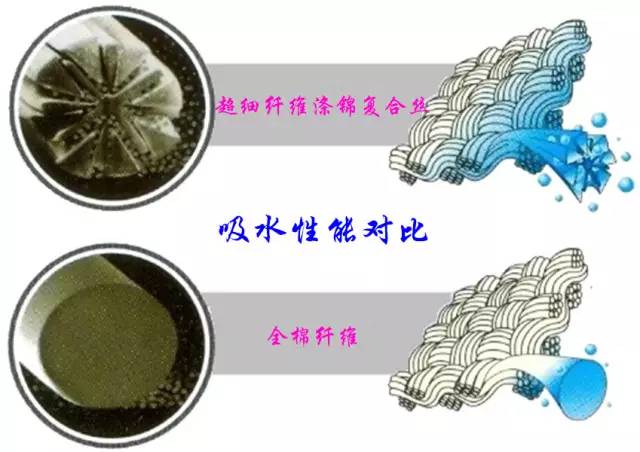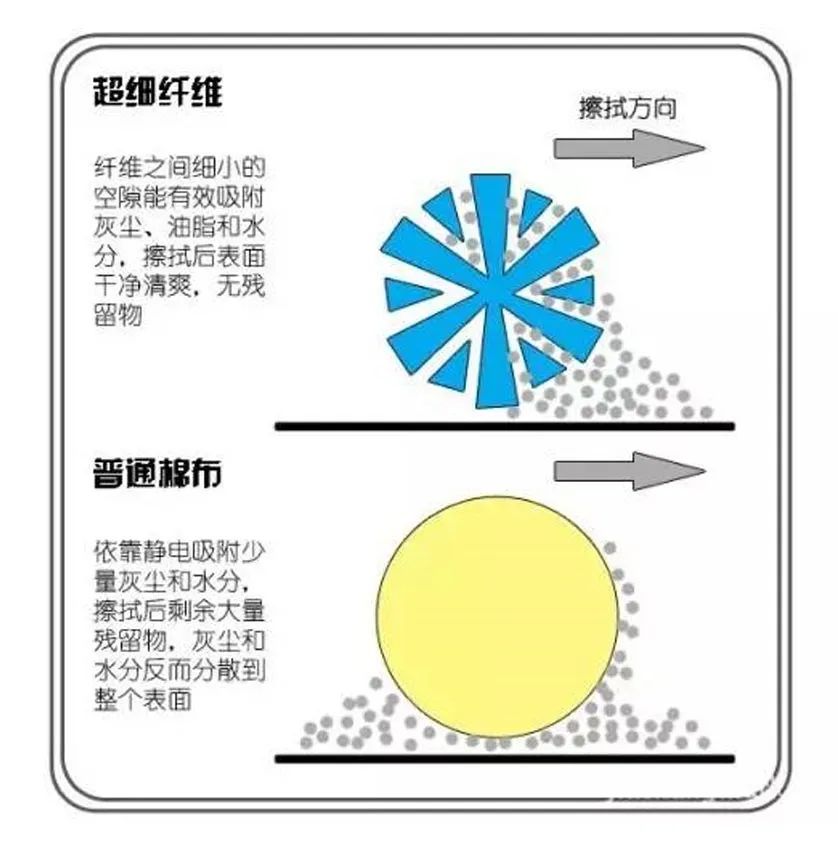Application of polyester and nylon composite microfiber
01
Fleece fabrics
With peach skin Take velvet fabrics as an example. The low linear density of composite fibers after fiber opening causes extremely short microfiber piles to be formed on the surface of the fabric after sanding treatment. The fabric has a unique appearance, warm and thick feel, so it has become popular in the domestic and international markets in recent years. fabric. Compared with natural suede, artificial suede not only has the feel and appearance of natural suede, but also surpasses natural suede in terms of lightness, thinness, dyeability, washability, wrinkle resistance, breathability and other aspects of the fabric. And it has mildew resistance, insect resistance and washing resistance that natural suede cannot match. Artificial suede is mainly used in coats, jackets, golf gloves and furniture fabrics.

02
Manufacturing artificial leather
Two fiber-forming polymers are produced through island spinning, stretching and cutting. The composite short fibers are then made into non-woven fabrics with a three-dimensional interlaced structure, and then treated with an impregnating liquid prepared from polyurethane. After the polyurethane solidifies, one component of the fiber is dissolved to form ultrafine fibers or porous lotus root-shaped fibers. Depending on whether a polyurethane foam layer is further coated on the surface, different products can be obtained, namely 2 layers of base structure leather and 1 layer of base structure leather. Finally, artificial leather products are obtained through surface treatments such as dyeing, coloring, and baking.
03
Imitation silk fabric
Imitation silk fabric has a wide range of uses. After the polyester and nylon composite silk is fiber-opened, the fiber’s special-shaped cross-section and different linear density, as well as its wicking and moisture-conducting properties, make the fabric have good feel, drape and unique luster, and its wearing comfort and aesthetics are better than silk fabrics.
04
High-efficiency clean cloth
The surface of this type of fabric is covered with ultra-fine fibers and has a complex three-dimensional structure, so it can absorb more It can achieve satisfactory cleaning results without any additional detergent. It is the best cleaning cloth for eyeglass lenses, cameras, and high-end instrument lenses.
05
Fashion fabrics
Since the emergence of microfibers has promoted the creative development of the fashion industry, coupled with various mixed fibers (different linear densities , different cross-sections, different shrinkage), wrinkle resistance, etc. This artificial suede has been used in a variety of products, such as high-end clothing, interior decoration, leather bags, shoes and many other products. At the same time, the development of new deformation technology and special finishing technology allows the use of microfiber to produce fabrics with different styles. The dry feel, silk-like and wool-like fabrics can reach the level of “simulated ultra-fine”, such as The new synthetic fiber fabric “Cheey-Les he” produced by TORAY Company has the characteristics of softness, fluffy, dry feel and lightweight warmth.

06
Knitted fabric
Polyester/nylon superfine silk and cotton yarn composite network was produced Network composite yarn to develop knitted fabrics. After the ultrafine fiber is opened and separated, the diameter of a single fiber is very small, so the number of fibers of the same special number yarn is far more than that of ordinary fiber, so the specific surface area of the fiber is much larger than that of ordinary fiber, so the ultrafine fiber fabric has Excellent hygroscopicity and moisture conductivity, soft hand feel and good drape. In addition, during the fiber opening process, some fibers will be broken, and the surface of the fabric will be covered with a layer of fiber lint, which will have a strong wooly feel. After the superfine fiber and cotton yarn are combined into a network, its anti-pilling performance is much better than that of ordinary filament fabrics. The addition of cotton fiber also makes the wear more comfortable and beautiful. From the appearance, the fabric has an obvious mixed-color flash effect. This fabric not only maintains the dimensional stability and easy-iron properties of conventional polyester filament fabrics, but also has the hygroscopicity and breathability of cotton fibers. It is an ideal new knitted fabric. The fabric is particularly suitable for T-shirts and casual clothing and has broad market prospects.
07
Other functional fabrics
Because the polyester and nylon composite fibers form extremely fine fibers after fiber opening, they have special-shaped cross-sections, large specific surface areas and Due to its unique interface properties, it is widely used as high-performance absorbent towels, quick-drying towels, filter materials and functional papers. Due to its fine monofilament linear density, microfiber yarn becomes very dense due to the large number of fibers in the cross-section. It will become even denser with a suitable organizational structure, so that it can be both windproof and windproof without any additional coating or film. Breathability requirements.
In recent years, the polyester and nylon composite yarn industry has experienced a reversal of supply and demand due to excessive expansion of production capacity, and the market conditions have undergone certain changes. However, with the increased efforts to develop new products downstream, polyester and nylon composite yarns are still in decline. There is a certain room for development. For example, polyester, nylon and cotton composite fabric can not only be used to make men’s and women’s jackets, but also windbreakers. It can be said to be a marketable fabric in winter. Polyester-nylon composite microfiber can develop its added value. For example, transfer printing on microfiber fabrics can overcome the problem of uneven coloring caused by the extremely large surface area of the fabric. Its authenticity rate is very high, and the dye transfer rate is also high. , the color fastness to washing can reach level 3. However, from the perspective of wrinkle recovery of ultrafine fibers, when the single fiber micronization exceeds a certain limit, it will have a negative impact. As the single fiber becomes thinner, the comprehensive mechanical properties of the fiber also change. Therefore, when considering the single fiber microWhen refining, a comprehensive balance must be made to ensure that the hand feel is improved to the greatest extent, so as not to lose sight of one thing and lose another. When the separation degree of polyester-nylon ultra-fine denier composite yarn in the fabric is high, the fabric will feel soft, otherwise the fabric will feel rough. Due to the differences in the characteristics of polyester and nylon, targeted post-processing techniques need to be developed. This is also a prerequisite for the wide application of ultra-fine polyester and nylon composite yarns.






